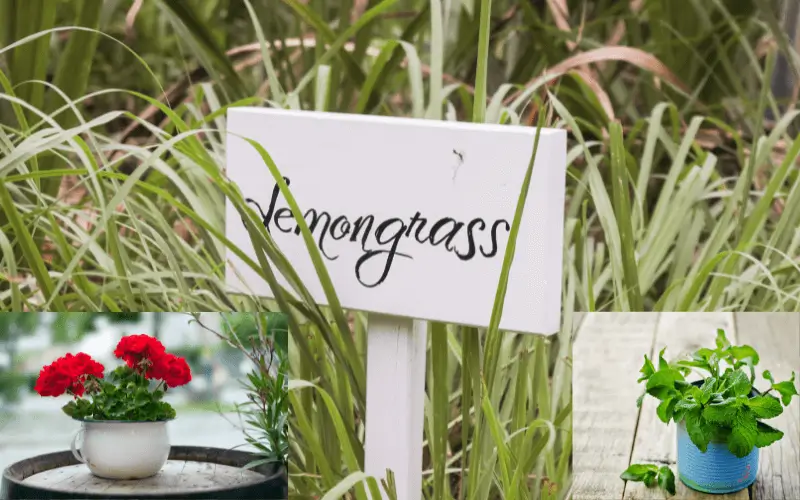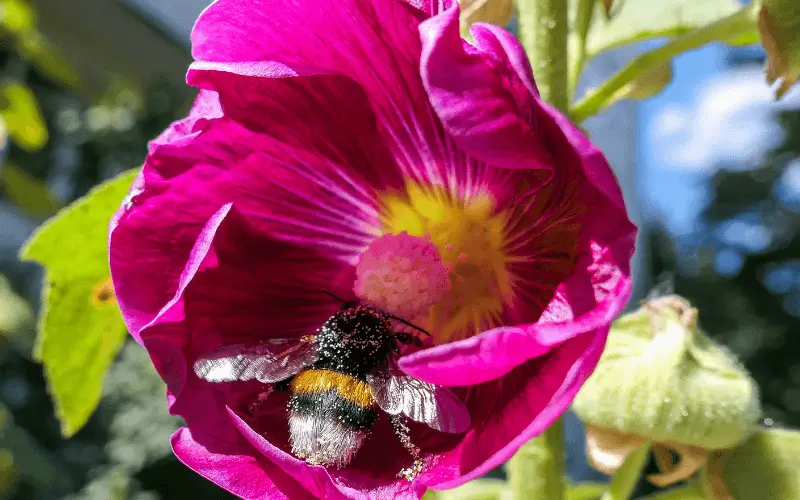
8 Ways To Keep Bees and Wasps Away From Your Swimming Pool
Expat Tips
Published: 08 July 2022 11:50 CET
Updated: 20 May 2025 11:50 CET
Nothing feels better during the hot summer months than taking a dip in the swimming pool. But what some people find aggravating, is the presence of pesky wasps and bees hovering around the water.
So why do swimming pools seem to attract the little buzzing, winged insects and what can you do to keep them away?
Well like most human beings, wasps and bees get hot when temperatures rise, so to help keep themselves cool, they look for sources of water that they can drink from to quench their thirst and to take a dip in.
Wasps are also attracted to the smell of chlorine in the water and flowers and grass are a big draw to both of them. So the best way to keep them both away from your pool is to make it look and smell less attractive to them.
How do you do this?
Well, it isn’t really that hard to do, by following one or several of the eight tips given below, you should find your pool area wasp and bee free!
Give them something else to drink
As mentioned earlier, wasps and bees are looking for water to drink and to help them cool off, so adding a new source of water can help.
The new source of water can be as simple as a bucket or a dish or even a bird bath. If you choose to use a bird bath, make sure you add a sponge or two to give the bees a safe place to hang out.
Whichever device you choose to help entice the wasps and bees away from the pool area, put it in place before you open your pool. This will help them to become familiar with and accustomed to the new water source.
If wasps are your main problem, try putting the water source near to their nest. It is also a good idea to use old pool water, as this will attract them faster.
Use a decoy wasps nest
This is obviously one for the wasps.
Wasps are naturally, extremely territorial and will avoid living next to other wasps. This is why hanging up a decoy nest will keep them away.
If a group of wasps approach your pool area and find another ‘nest’ already there, they will think that another group has beaten them to it and leave the scene.
Decoy nests can be bought online or can quite easily be made by getting a brown paper bag, blowing it up into the shape of a nest, and placing some moth balls inside. This will create a defensive odour that will keep wasp visitors away.
Repel them with something smelly
This one is primarily for bees. Surround your pool with potted mint plants, geraniums, or lemongrass as this will help to repel them.
If you don’t want to use plants, mix peppermint, lemongrass, or clove oil with water and spray it around the pool area.
Another trick, as weird as it sounds, is tumble dryer sheets. Place them in patio furniture so they are inconspicuous, but still able to give off a repellent scent.
Avoid sweet smells like flowers and sugary drinks, and keep exposed foods away from the pool area as this will simply draw the bees in.

Hang A Few Scraps Of Raw Meat
This is another one for the wasps. Have you noticed how they always seem to turn up to a BBQ uninvited?
That’s because like us humans, wasps love a good steak, a juicy raw burger, or in fact any raw meat that is hanging around.
Hang a piece of raw meat somewhere close to but not in your pool area, this will attract the wasps and draw them away from the pool allowing you to enjoy the water alone.
Be sure not to leave the meat out for too long though, as it will eventually rot and attract other bugs like maggots and flies.
Use diesel fuel
Once again this one is for the wasps. No one knows why, but wasps are strangely attracted to the smell of diesel fuel. To such an extent that they will fly directly into a bottle of it just to get a taste.
So if you have any diesel fuel to spare, fill a small bottle with it and leave it either near the wasp nest (if you have one) or wherever they congregate. In a day or two, you will be surprised at just how many you have caught.
Use a wasp trap
A wasp trap is very effective in drawing the wasps away from the swimming pool area, it also helps to keep them contained.
This method can also be made ‘bee friendly’ by converting it to a ‘no kill’ trap.
- Use scissors to cut the top off of a plastic water/soda bottle
- Remove cap from top
- Grease the inner opening of the bottle top (this makes it harder for the insects to crawl out)
- Insert the removed top into the bottle, cap end first like a funnel
- Fill 1/4 of the bottle with bait (sugar water, sugar & lemon juice, soda, syrup)
The wasps will be attracted to the sweet liquid, land on the inside of the walls, and slip inside.
To make the trap a ‘no kill’ for the bees, use only a small amount of bait (not enough to drown them).
Call a beekeeper
If you have a lot of bees but can’t find a nest, try calling a beekeeper. They will find where the nest is, remove it and safely relocate the bees. You will then be able to enjoy your pool, bee-free, whilst they go about their daily duties of pollinating and making delicious honey.
No Luck? Call a specialist
The removal of both bees and wasps can be a little bit pricey, so try the other suggestions first. If they don’t work a pest control company will be able to help.
They will be able to provide you with a service that relocates the bees or wasps, rather than killing them with insecticides.
This is also important so that you don’t have a poisonous gas landing in your swimming pool, garden, or on your lawn.
A little general knowledge about bees and wasps.
While most people think that wasps and bees are out to sting them, this is actually just a self-defence tactic, as they only do this when provoked.
Once a bee has stung you it will actually die. This is because when they try to pull themselves out of the sting their abdomen is pulled apart.
On the other hand wasps, like hornets, are a bit more temperamental. They are also extremely territorial and can, unfortunately, go on to sting more than once.

Wasp and Bee facts
Wasps
- There are around 30,000 different species of wasp
- Wasps create paper to build their nests by chewing on bark and then spitting it out. In fact, wasps were the ones that first thought of the idea of paper.
- Only the females have stingers.
- Male wasps are called drones and their sole job is to mate with the Queen. When they do, they die!
- Wasps feed their young insect larvae. Yuck!
- At the end of summer, the colony will produce more queen bees and males. After they mate, the queen looks for somewhere to hibernate to survive the winter. The cold weather will then kill the males, workers, and foundation queen.
Source
https://blog.cwf-fcf.org/index.php/en/8-cool-facts-about-wasps-that-make-you-love-them/
https://www.westernexterminator.com/blog/stinging-pests/10-facts-wasps
Bees
- Many bees live in hives both on top of and under the group, however, some solitary bees will nest in the ground.
- If you find a sluggish bee, it could be dehydrated. Place a 50/50 mix of white sugar and water in a spoon or drinks bottle cap and place it next to the bee. It will then drink this and get the energy to fly off.
- Bees are pollinators and the vast majority of our plants depend on them. It is thought that around 1 in every 3 mouthfuls of our food is dependent on the pollination of Bees!
- Unlike wasps, female bees are the workers.
- Bees will die if they sting you or lose their stinger.
- Bees have five eyes and six legs as they are classed as insects.
- Bees are noisy because it is the sound of their wings beating up to 12,000 times a minute.
- Honeybees are the only insect that makes something that humans can eat.
- Like wasps, only the females have stingers. Males cannot sting you.
How do you treat a wasp or bee sting?
If you are unfortunate enough to be stung, it is important to know how to treat it.
Find out more in our article, How To Treat A Wasp Or Bee Sting
Have any tips of your own on how to keep bees and wasps away from your swimming pool? Please share them on our Facebook post.
Source
https://supersimple.com/article/10-fun-facts-about-bees/
https://www.wwf.org.uk/learn/fascinating-facts/bees
https://honeybeenet.gsfc.nasa.gov/Honeybees/Basics.htm


















